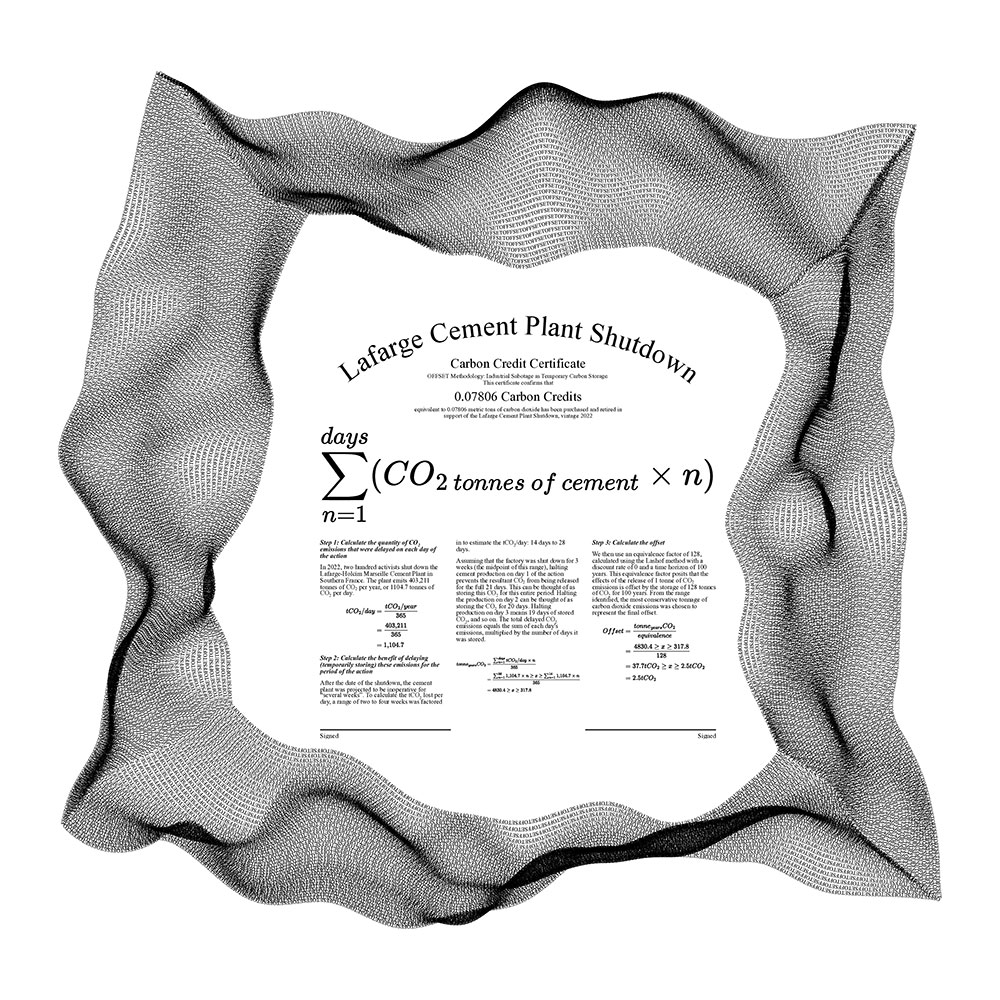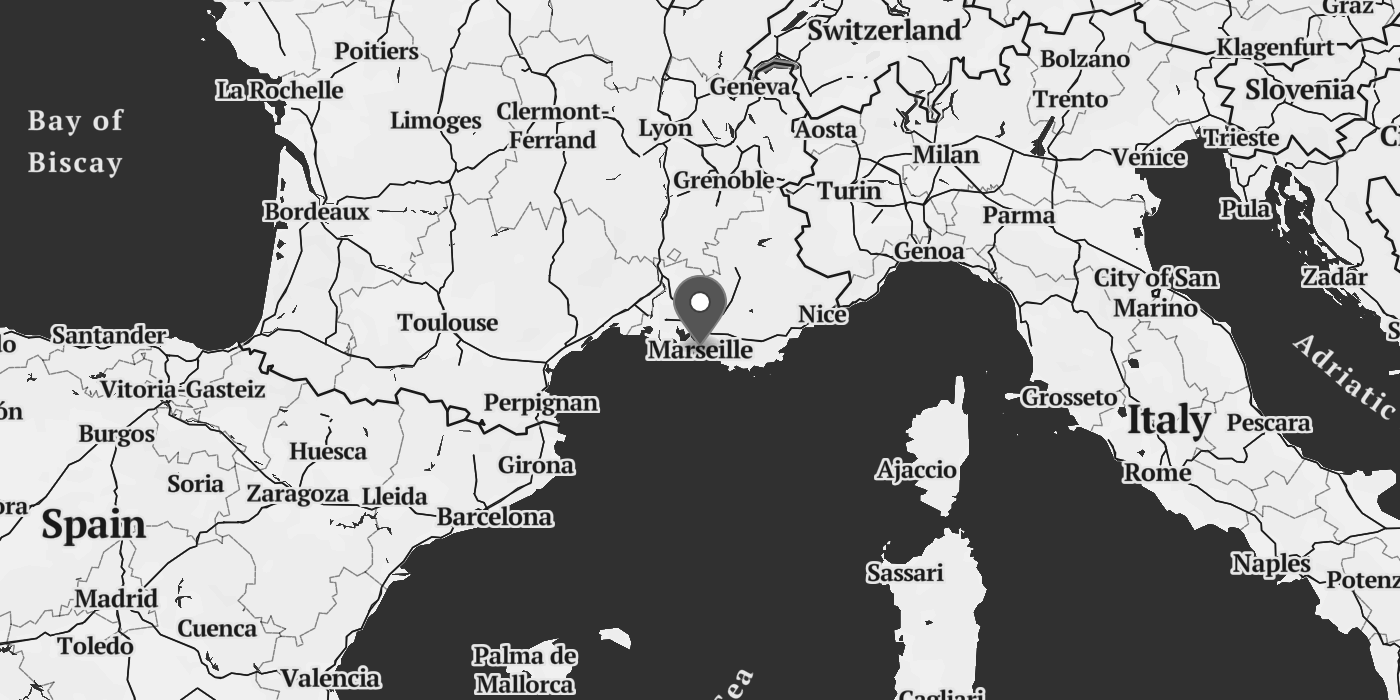Lafarge Cement Plant Shutdown
 $200 carbon credit certificate retiring 0.07806 tons of CO2
$200 carbon credit certificate retiring 0.07806 tons of CO2

Methodology
Step 1: Calculate the quantity of CO2 emissions that were delayed on each day of the action
In 2022, two hundred activists shut down the Lafarge-Holcim Marseille Cement Plant in Southern France. The plant emits 403,211 tonnes of CO2 per year,1 or 1104.7 tonnes of CO2 per day.
Step 2: Calculate the benefit of delaying (temporarily storing) these emissions for the period of the action
Following the shutdown, the cement plant was projected to be inoperative for “several weeks”1. To calculate the tCO2 lost per day, a range of two to four weeks was factored in to estimate the tCO2/day: 14 days to 28 days.
Assuming that the factory was shut down for 3 weeks (the midpoint of this range), halting cement production on day 1 of the action prevents the resultant CO2 from being released for the full 21 days. This can be thought of as storing this CO2 for this entire period. Halting the production on day 2 can be thought of as storing the CO2 for 20 days. Halting production on day 3 means 19 days of stored CO2, and so on. The total delayed CO2 emissions equals the sum of each day's emissions, multiplied by the number of days it was stored.
Step 3: Calculate the offset
We then use an equivalence factor of 128, calculated using the Lashof method with a discount rate of 0 and a time horizon of 100 years 4 5. This equivalence factor posits that the effects of the release of 1 tonne of CO2 emissions is offset by the storage of 128 tonnes of CO2 for 100 years. From the range identified, the most conservative tonnage of carbon dioxide emissions was chosen to represent the final offset.
-
https://theatlasnews.co/conflict/2022/12/12/200-french-environmental-activists-sabotage-lafarge-holcim-marseille-cement-plant ↩↩
-
https://www.cevreadaleti.org/conflict/holcim-lafarge-quarry-switzerland ↩
-
https://ground.news/article/environmentalists-attack-one-of-french-cement-giant-lafarges-factories_59c55a ↩
-
Chay et. al. calculate this equivalence factor using Lashof here: https://carbonplan.org/research/ton-year-explainer ↩
-
Fearnside et. al. (2000) Accounting for time in mitigating global warming through land-use change and forestry. Mitigation and adaptation strategies for global change ↩